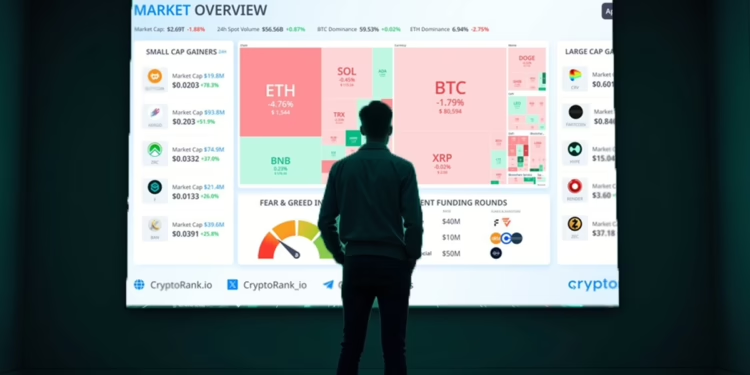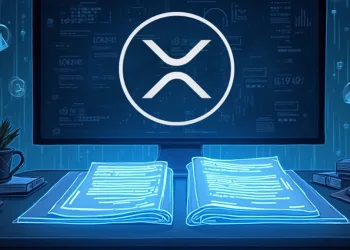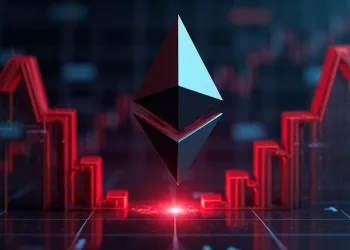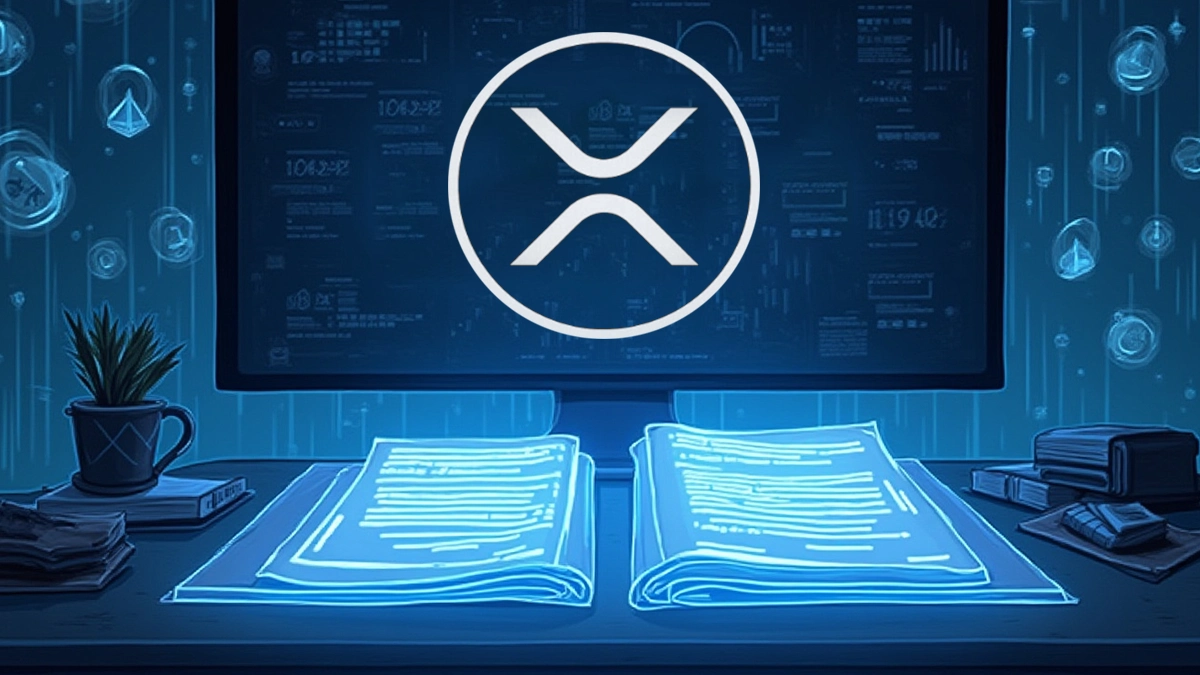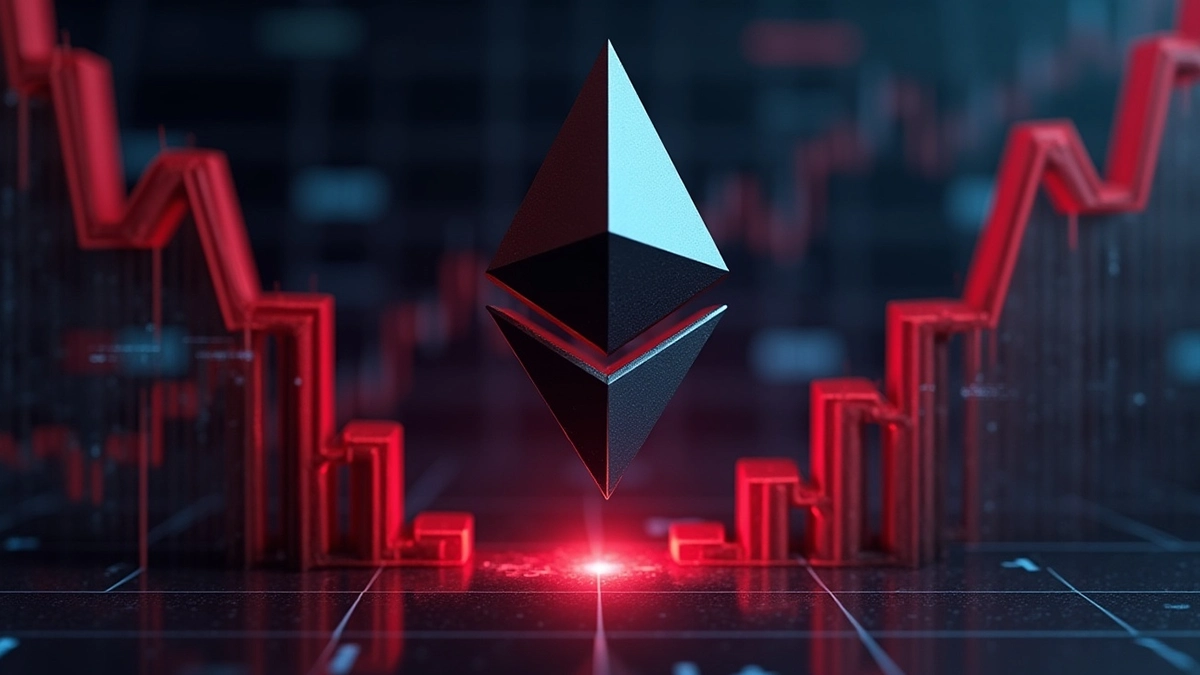- The global crypto market capitalization experienced severe deterioration because of U.S. tariff increases and a CPI reading that missed forecasts.
- Investor actions displayed conflicting behavior because the Fear & Greed Index reached 25 while daily spot volume demonstrated slight increase.
- The value of both large and small market-cap tokens including CRV and FARTCOIN increased significantly while the market fell across the board.
On April 11, 2025, the global cryptocurrency market experienced a notable downturn amid heightened geopolitical tension and evolving financial policies.The market capitalization experienced a drop to $2.69 trillion which resulted in a 1.88% decrease over the course of 24 hours. The market loss occurred following the U.S. decision to substantially boost Chinese import tariffs from 139% to 145%.
Market uncertainty arose from both the Federal Open Market Committee decision coupled with a CPI rate below projections at 2.4% year-over-year. During this period the Crypto Fear & Greed Index reached an “Extreme Fear” level of 25 and resulted in over $303 million worth of trading losses.
Bitcoin Strengthens as Ethereum Lags Behind
The general bearish market sentiment was accompanied by an increase in daily trading activity because spot volume reached $56.56 billion, marking an 0.87% growth.The analyzed period demonstrated Bitcoin gaining a slightly higher share of 59.53% in the market space while Ethereum’s control reduced to 6.94% which suggested Bitcoin’s superior performance.
Ethereum’s decreasing price shows that investors hold concerns about particular alternative coins when normal market conditions lead to price drops.The market surge impacted many digital assets significantly because of combined market sentiments and sector-related events.
Remarkable Gains in Diverse Crypto Sectors
The Curve DAO Token (CRV) exhibited the biggest increase of large-cap tokens by reaching $0.601 while rising 17.5%. The expansion was mainly fueled by Curve’s sustained operations within the decentralized finance sphere enabling liquidity provision activities.
The cryptocurrency FARTCOIN (FARTCOIN) gained 13.6% to reach $0.846 even though its name carries an unconventional ring to it. The market continues to invest in new unconventional assets with potential applications which drives its upward trend. The market interest in speculative and future-focused crypto segments pushed HYPE Token to achieve a 11.3% increase in value to $15.04.
The value of Render (RNDR) rose to $3.60 after a 9.15% increase due to its position as a decentralized rendering solution for digital content creators. The demand for privacy in blockchain transactions pushed Zcash ZEC to gain 8.98% as it maintained a market value of $37.18 per token.These results show how diverse blockchain applications continue to shape investor behavior during volatile market phases.
Policy Reversals Shift U.S. Eases Crypto Regulations
Previously, president Donald Trump removed IRS restrictions that aimed to track cryptocurrency transactions which resulted in decreased regulatory obstacles for users. Such policy changes indicate a change from previous regulations to support digital asset market participation.
The Nasdaq made a request to the SEC for a spot exchange-traded fund (ETF) that will list Avalanche ($AVAX) which would provide institutional investors with new access to blockchain technology. The Securities and Exchange Commission threw out unregistered securities claims against Nova Labs which suggests the agency is changing its regulatory stance.
Small-Cap Tokens See Rapid Growth
Smaller market players also saw strong growth. Buttcoin (BUTTCOIN) surged 78.3%, leading small-cap gains. AERGO climbed 51.9%, while ZircuitL2 (ZRC) increased 37%. SynFuturesDefi ($F) rose 26%, and Ban Comedian ($BAN) added 25.8%.
These gains underline continued appetite for speculative assets, particularly among retail traders exploring new projects. They also suggest that investor attention is not limited to established names but is spread across emerging ventures in the digital asset space.
Market Faces Continued Uncertainty
These changes across various areas—price action, regulation, and economic signals—reflect a market adjusting to global and national influences. They raise key questions about where investor priorities lie in a rapidly shifting environment. While volatility remains high, the overall market still exhibits trading interest and structural growth. How long the current fear-driven sentiment persists will depend on upcoming economic data and regulatory decisions in major jurisdictions.


